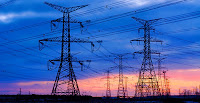The U.S. electric power grid is one of the biggest, most costly machines on Earth. Its value is somewhere in the trillions of dollars, and it currently delivers power to 334 million people in the United States and parts of Mexico and Canada. Its basic technology was settled over 100 years ago as a kind of one-way street that delivers electricity from a network of power plants to passive consumers.
The National Academy of Engineering once rated the grid as the "supreme engineering achievement of the 20th century." But starting about three years ago, the Obama administration realized that without a 21st-century technology boost, the grid might not be able to support its Clean Power Plan. The grid would have to perform more like a two-way street to provide renewable energy quickly enough to lower the risks of climate change.
In January Energy Secretary Ernest Moniz rolled out the blueprint for this ambitious change, bankrolled by $220 million in new funds. Teams from 14 of DOE's 17 research labs will work on 88 projects designed to transform the power grid into one that could handle much larger quantities of wind and solar power.
"Modernizing the U.S. electric grid is essential to reducing carbon emissions, creating safeguards against attacks on our infrastructure and keeping the lights on," announced Moniz.
What Moniz didn't mention, however, was that the ambitious, 30-year project's eventual price tag could run into the hundreds of billions and the fact that many of the technologies needed to complete his vision either have not been invented yet or have been stymied in the "valley of death" between research laboratories and commercial development.
"This is the first down payment. Don't be fooled; this is a small tugboat trying to turn a big ocean liner of other people's investments," explained Bryan Hannegan, an associate director of the National Renewable Energy Laboratory (NREL) in Golden, Colo. He is co-chairman of the Grid Modernization Laboratory Consortium, which will lead DOE into what could be the most complex and far-reaching energy project of the next few decades.
Because trillions of dollars is going to be invested in the grid by utilities over the next three decades, Hannegan sees his "tugboat" nudging the effort toward a future that will meet the deadlines of President Obama's pledge for a cleaner energy system. It will require a "fundamentally different" power grid that is flexible and operates more like a mesh than the grid's current hub-and-spoke system that delivers power from the center.
Read more at Modernizing the Grid: a Tugboat 'Trying to Turn a Big Ocean Liner'

No comments:
Post a Comment